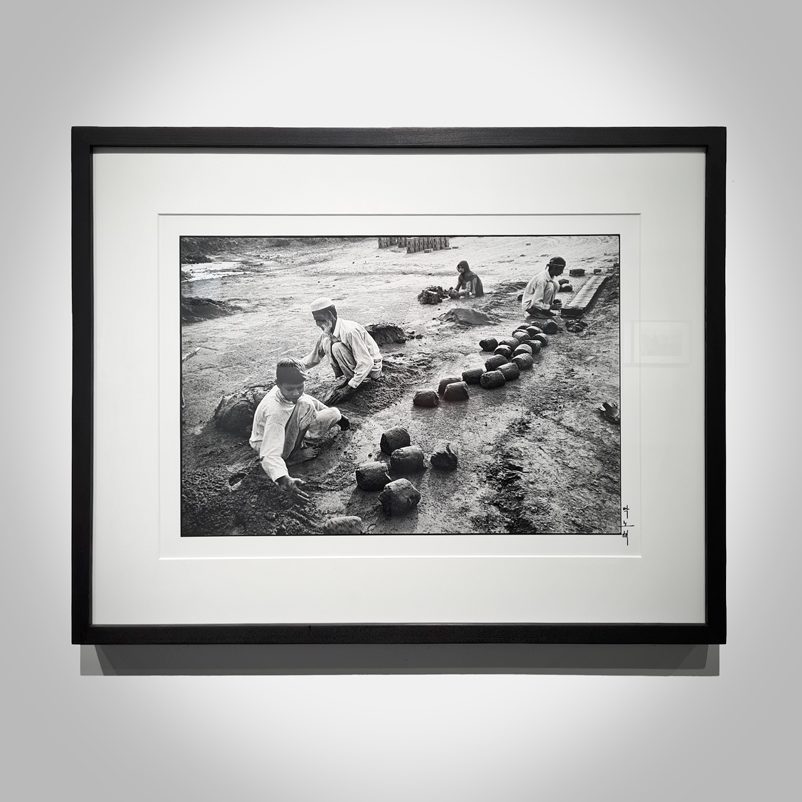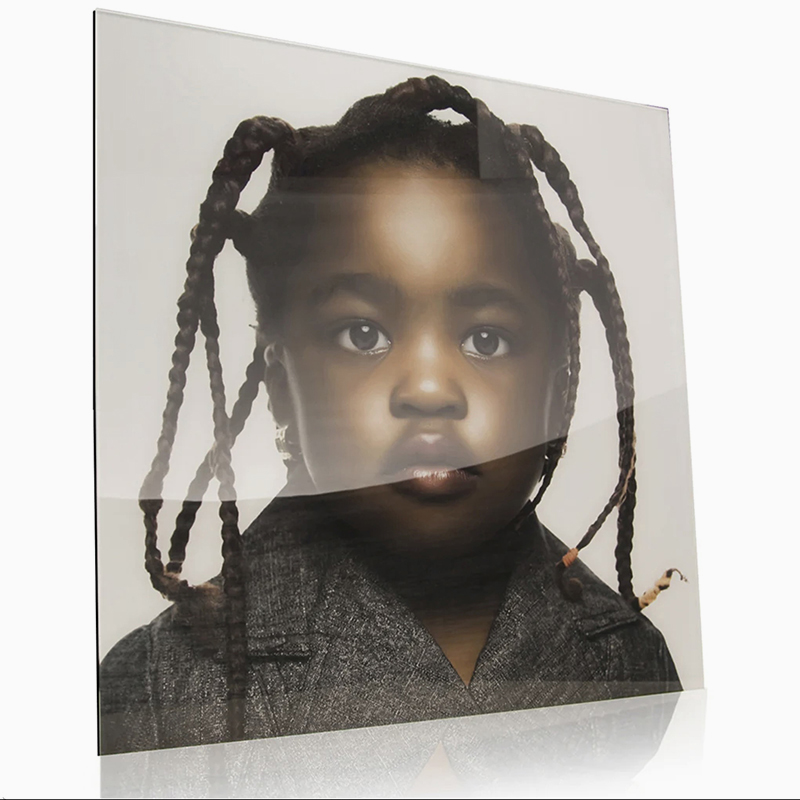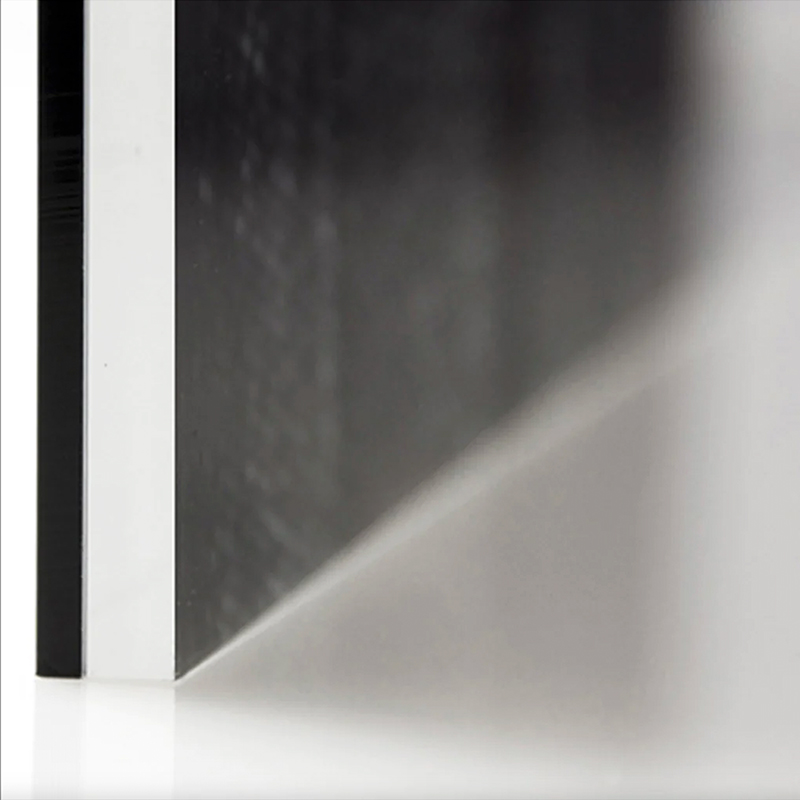Mounts
There is a wide range of mounting and framing options to choose from today. Mounts fall into two categories:
Visible mounts
The two main types of visible mounts are visible mounts widely used with prints: Window mounts (sometimes called passepartout) and acrylic mounts (sometimes called face-mounted acrylics).
Window mounts / passepartout
Most people are familiar with traditional window mounts / passepartout. These are thin boards with a square or rectangular ‘window’ cut into the board through which we see the image. These serve both an aesthetic function (they provide a border around the image) and a practical one (they prevent the glass from touching the print; this in turn prevents a long term problem where a fungus can grow at the point where glass and print touch each other).
Broadly speaking, there are two types of window mount: standard quality and acid free, archival quality mounts. When ordering a window mount it is important to specify that it should be acid free and preferably of conservation grade. Otherwise it will be made of low grade cardboard and will discolour and damage the print after a few years use. We specify only archival quality mounts as these are a requirement for galleries and museums.
Acrylic mounts (or face-mounted acrylics)
Less well known (and much more expensive) are face-mounted acrylic prints. These are made from optically clear acrylic sheets, usually 3 mm or 5 mm thick. They serve both an aesthetic function (they have a high gloss surface that gives colours a rich, saturated appearance) and a practical one—they are very effective at blocking the UV (ultra violet) light that is present in daylight, the main cause of long-term colour fading.
These sometimes have diamond polished edges as shown here.

Classic style frame with window mount / passepartout


Face-mounted acrylic print
Invisible Mounts (Substrates)
The main purpose of invisible mounts is to provide a stiff, flat material for the print to be mounted onto. The materials used are called substrates and by mounting we mean the process of gluing/laminating the print onto the substrate. Some mounting processes use heat activated adhesives and some use pressure activated adhesives that work at room temperature.
Room temperature / cold dry mounting process
We use archival pigment inks that are known to discolour when heated. Although they quickly regain their normal colour when they cool down again, the long-term effect of this temporary discolouration is unknown, and for this reason we insist that our prints are mounted using either of the two processes that work at room temperature: room temperature/cold dry mounting. (The other mounting process that can be used is called liquid acrylic mounting. However, this is only suitable for mounting prints onto acrylic.)
Both room temperature and liquid acrylic mounting processes are accepted by art collectors, galleries and museums as they do not affect the long-term colour accuracy and permanence of prints.
Types of mounting substrates
The most popular types of mounts today are as follows (from the most to the least expensive):
- Dibond—this is a sandwich of two thin layers of aluminium and a core of HD-PVC. It is 3 mm thick and is widely used in the art world. In terms of cost, it is less expensive than face-mounted acrylic but more expensive than the options below.
- Conservation grade mount board—like some of the papers we print onto, this type of mount board is made from 100% cotton. Its archival properties are well known and it is widely accepted in the art world. It is not as stiff as Dibond and is mostly chosen for cost reasons.
- High-density PCV sheets (e.g. Foamex)—these are not accepted in the art world, and are mostly chosen for budget reasons. They are also chosen where print longevity is not a requirement (e.g. when the prints will be destroyed after an exhibition).
- Polystyrene sheets (e.g. Foamcore or Foamboard)—these light weight sheets are not accepted in the art world, but are sometimes chosen for budget reasons. They bow very easily and the edges can be easily damaged. They are often used for very short term display.



